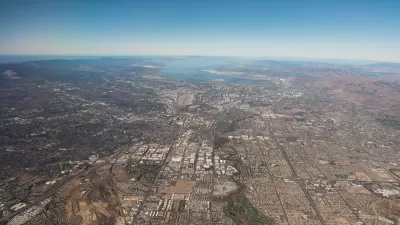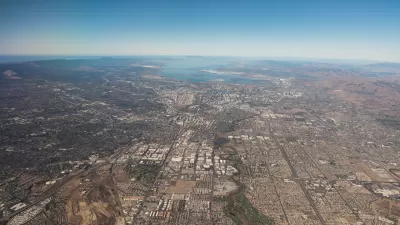Though a handful of recent articles predicted "peak Silicon Valley," new numbers show the region is still producing lots of good jobs and attracting plenty of venture capital.

Last week, Justin Fox at Bloomberg points out, more than one columnist—himself included—predicted the end of Silicon Valley, citing all the things that make it hard to live there: housing costs, tax rates and traffic, not to mention drought, fire, flood and earthquakes.
But, Fox writes, his analysis of new employment numbers released at the beginning of this week show "the opposite of an exodus."
"[M]etro San Jose is back to adding jobs at more than twice the pace of the U.S., and metro San Francisco appears to be bouncing back, too. Among the nation's 50 largest metro areas, San Jose ranked seventh in the rate of job growth from January 2017 through January 2018, and San Francisco was more or less tied for 17th with Houston. The nearby Sacramento metro area came in tenth."
It turns out that predicting the end of Silicon Valley, then debunking the prediction, then making it again, is something of a regular occurrence (Fox has a link to an 18-year-old article along the same lines).
So, though '[t]he argument that Silicon Valley will soon pass its peak may well be right," Fox writes, "I'd be cautious about predicting any kind of precipitous decline."
FULL STORY: Silicon Valley's Demise Has Been Postponed Again

Planetizen Federal Action Tracker
A weekly monitor of how Trump’s orders and actions are impacting planners and planning in America.

Maui's Vacation Rental Debate Turns Ugly
Verbal attacks, misinformation campaigns and fistfights plague a high-stakes debate to convert thousands of vacation rentals into long-term housing.

San Francisco Suspends Traffic Calming Amidst Record Deaths
Citing “a challenging fiscal landscape,” the city will cease the program on the heels of 42 traffic deaths, including 24 pedestrians.

Defunct Pittsburgh Power Plant to Become Residential Tower
A decommissioned steam heat plant will be redeveloped into almost 100 affordable housing units.

Trump Prompts Restructuring of Transportation Research Board in “Unprecedented Overreach”
The TRB has eliminated more than half of its committees including those focused on climate, equity, and cities.

Amtrak Rolls Out New Orleans to Alabama “Mardi Gras” Train
The new service will operate morning and evening departures between Mobile and New Orleans.
Urban Design for Planners 1: Software Tools
This six-course series explores essential urban design concepts using open source software and equips planners with the tools they need to participate fully in the urban design process.
Planning for Universal Design
Learn the tools for implementing Universal Design in planning regulations.
Heyer Gruel & Associates PA
JM Goldson LLC
Custer County Colorado
City of Camden Redevelopment Agency
City of Astoria
Transportation Research & Education Center (TREC) at Portland State University
Jefferson Parish Government
Camden Redevelopment Agency
City of Claremont




























